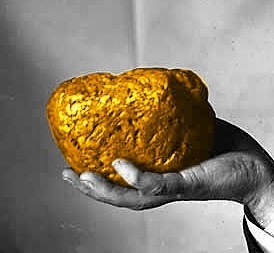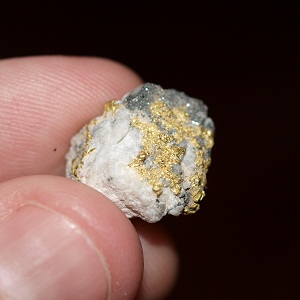
Back in the 1800’s British Columbia, Canada was a quiet place where the biggest money maker in the region was fur trapping by just a small group of hardened explorers. There was not a lot of development planned for the region to say the least. It was a vast expanse of wilderness that did not have a lot to offer.
That all changed when gold was struck in 1858, and 30,000 people looking to get rich quickly flooded into the province. And so it was that British Columbia’s storied gold history was born.
The gold finds were were typical in two ways; it got a whole lot of people excited for the untold riches that were sure to be found, most of whom left with little to show for their efforts. It was also the single biggest event that led to the development of British Columbia into what it is today.
Today, much of the gold exploration is more focused on specific large mining operations within the province that are mining the larger lode sources, but even the rich placer mining regions that were first mined in the 1800s still attract attention. Many miners are still finding rich gold deposits, and in certain areas some really spectacular gold nuggets can still be found.
Also Read: The Lost Lemon Mine in British Columbia
The Fraser River Gold Rush gets things Started
The Fraser River finds in 1858 is what got everything rolling in British Columbia and that was quickly followed up by the Cariboo gold rush and another significant find around Barkerville.
The first gold discoveries in the Fraser River area actually occurred in the early 1850’s, but no one took it seriously until some of the gold arrived on a ship in San Francisco (it seems someone could not keep a secret). Once the word was out, many of the same prospectors that worked claims in the California gold rush flocked to British Columbia.
How many people went into the pacific west of Canada in search of fame and fortune? Let’s put it this way; although it has not been verified, Barkerville once boasted that it was the biggest city north of San Francisco and west of Chicago at the time. Like many towns throughout the world, it was truly a boom-and-bust that attracted thousands of hopeful prospectors, most of whom left not long after they arrived.
Pine Creek and the Atlin Area
 The activity along the Fraser River and within the Cariboo district had significantly died down within a few decades after the initial discoveries here. While minor gold deposits continued to be found throughout British Columbia, there were no other major discoveries found until 1898.
The activity along the Fraser River and within the Cariboo district had significantly died down within a few decades after the initial discoveries here. While minor gold deposits continued to be found throughout British Columbia, there were no other major discoveries found until 1898.
This is when the rich gold placers were discovered at Atlin, an extremely remote region in British Columbia near the border of the Yukon Territory.
Again the rush was on, but these claims seemed to dry up faster than those of the earlier gold rushes because much of the gold was deeper in the ground. A lot of the mining that took place after the smaller claims dried up was done on a much larger scale and required significant investment by larger mining companies to exploit the harder to reach ground.
Mine operators are still coming and going to the present day, and there is still considerable gold being found to this day.
The Type of Gold Found in British Columbia
Much of the British Columbia gold that is mined today is found primarily in alluvial deposits within the sand and gravel of the streams and rivers. These are the placer types of deposits that the historic miners always found first, as they could use simple gold pans and sluice boxes to recover the gold.
On a small-scale, not much has changed in that regard. Small-scale prospectors still use gold pans and sluice boxes to recover gold, along with larger equipment like dredges and highbankers
.
Of course, these placers are generally fed by some type of hard rock sources, and all of the major gold districts within British Columbia also have varying amounts of lode mining going on within the mineralized zone as well.
It is the lode deposits that are more commonly worked by large companies with significant funds to invest. While smaller miners can also profitably work hard rock sources of gold, it can be very challenging, and it is usually only possible when the ore is extremely high-grade.
Current Gold Mining in B.C.
 Small scale and hobby mining still take place to this day in all of the same areas that produced gold in the original gold rushes. There are still a few small scale miners in these areas that have historically produced gold in B.C., and some of them do quite well even today. As it has always been with mining, the most important thing is to locate rich ground, small areas that were missed by the old-timers.
Small scale and hobby mining still take place to this day in all of the same areas that produced gold in the original gold rushes. There are still a few small scale miners in these areas that have historically produced gold in B.C., and some of them do quite well even today. As it has always been with mining, the most important thing is to locate rich ground, small areas that were missed by the old-timers.
With gold at much higher prices today than they have been for decades, some are able to profitably rework old placer ground and tailings, by reprocessing the gravel. The success using this tactic will require entirely on the efficiency of the methods that were used by the old-timers that first worked that ground. If they had a poorly run operation and were missing a lot of gold, then there is still plenty left in the ground, but if they were running efficiently then there won’t be much left to find today. Proper sampling will tell you whether an area is worthy of extra attention.
Next: Gold Panning on the Fraser River, British Columbia







